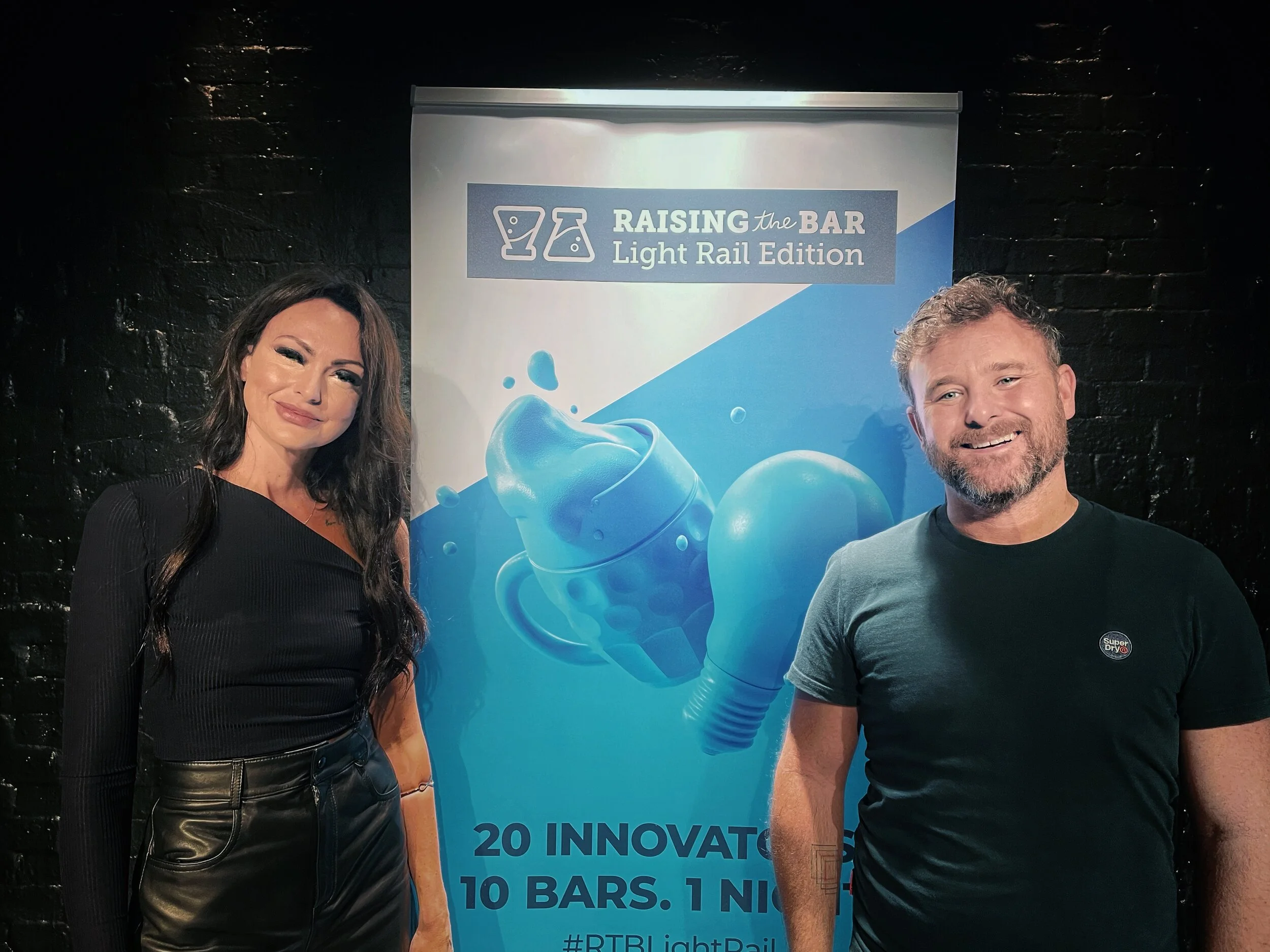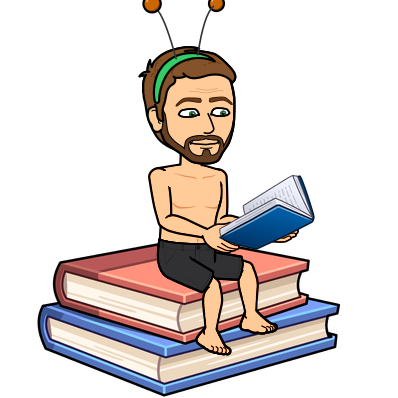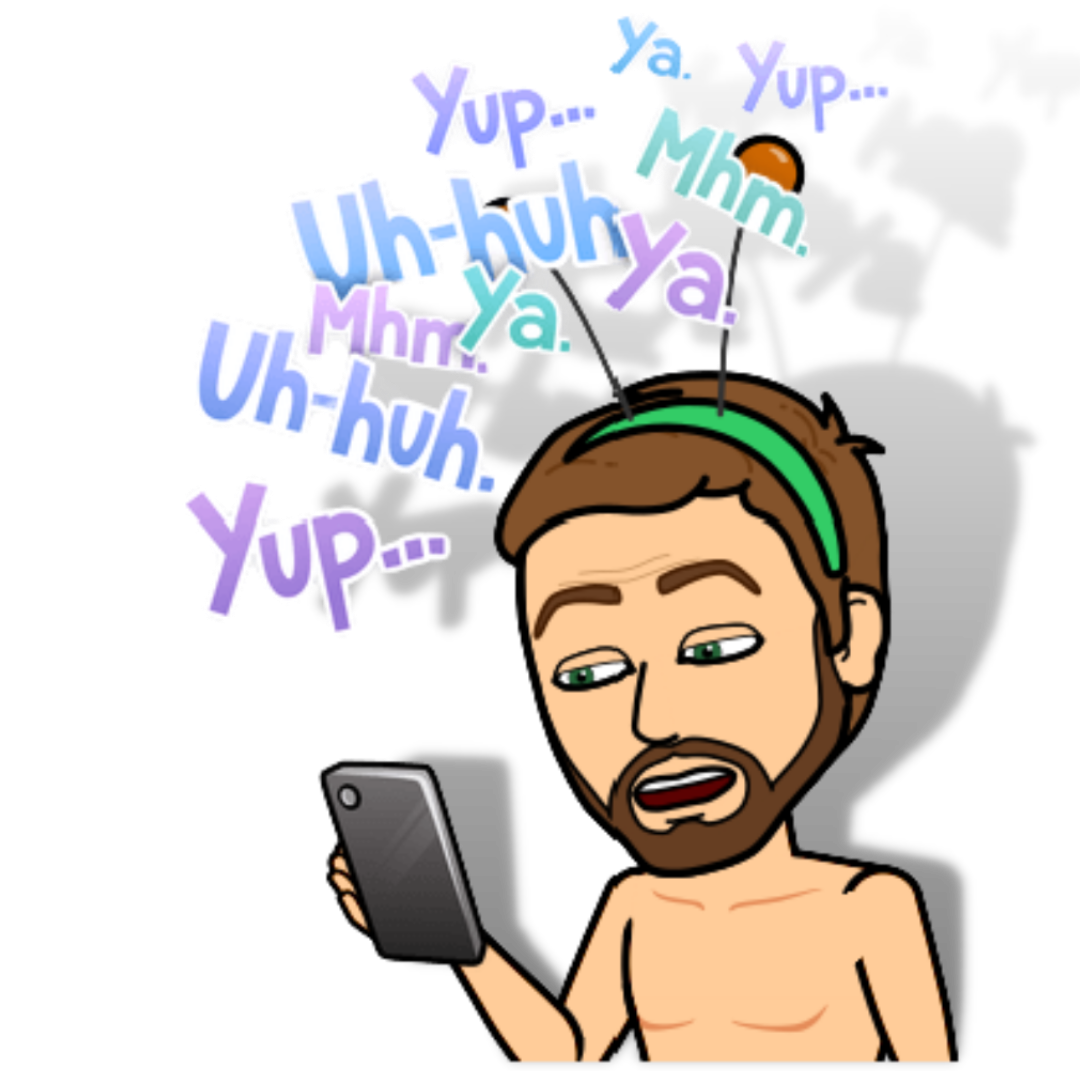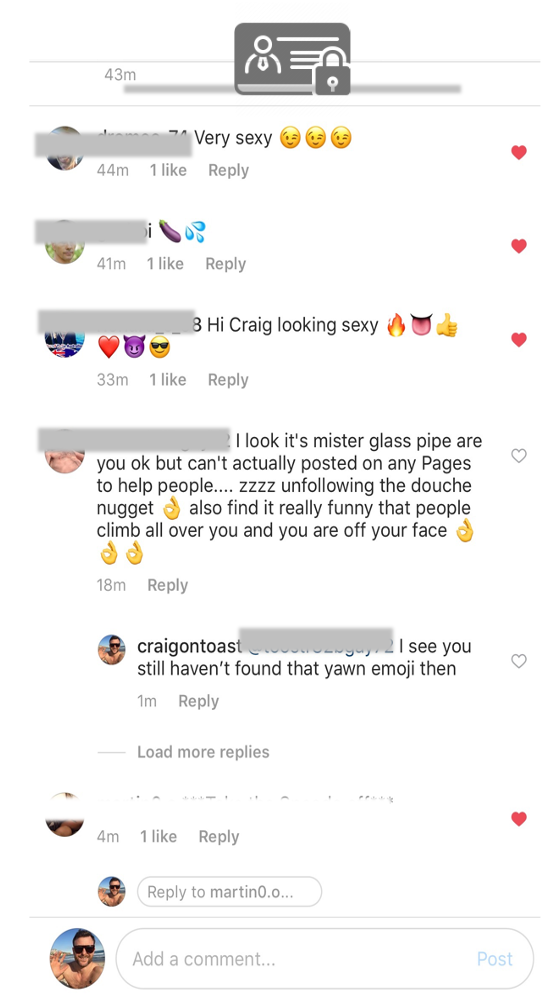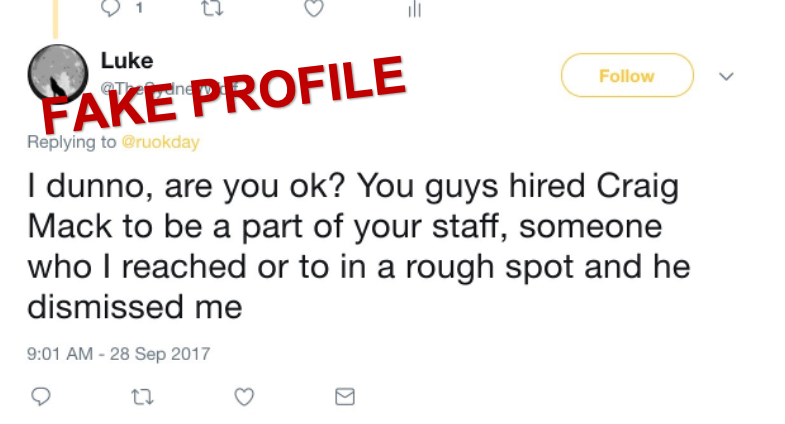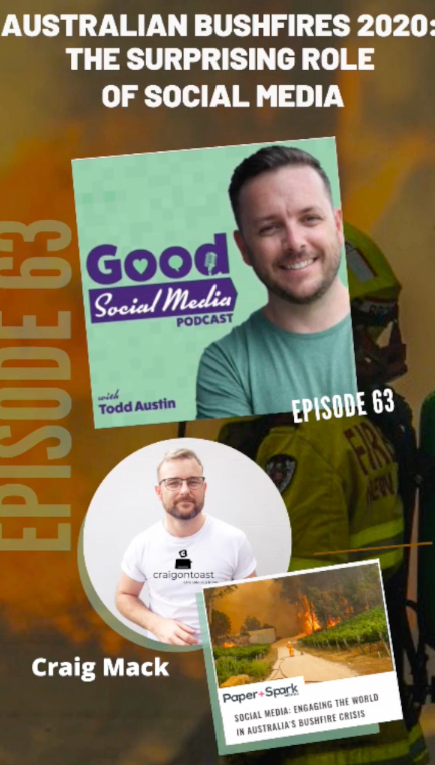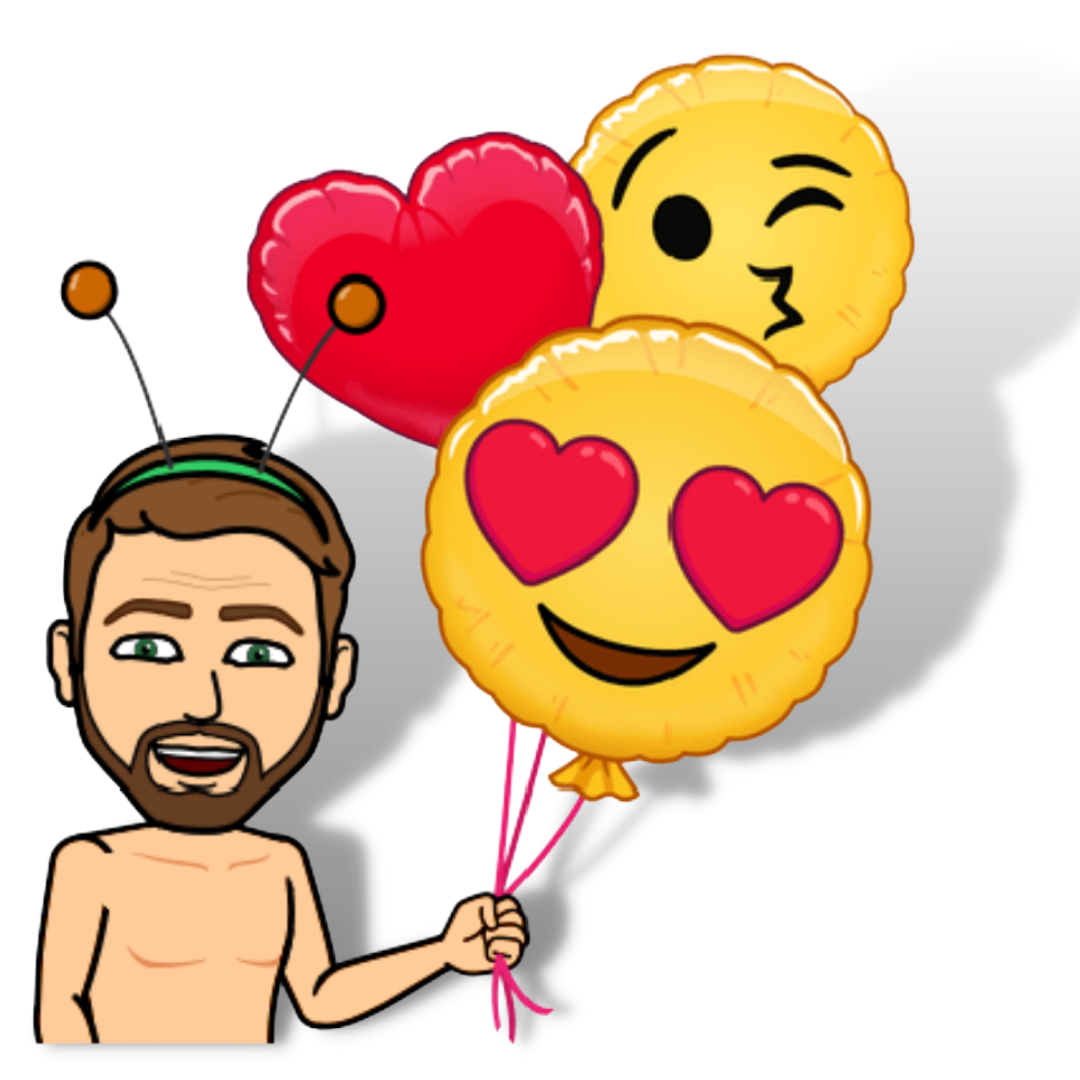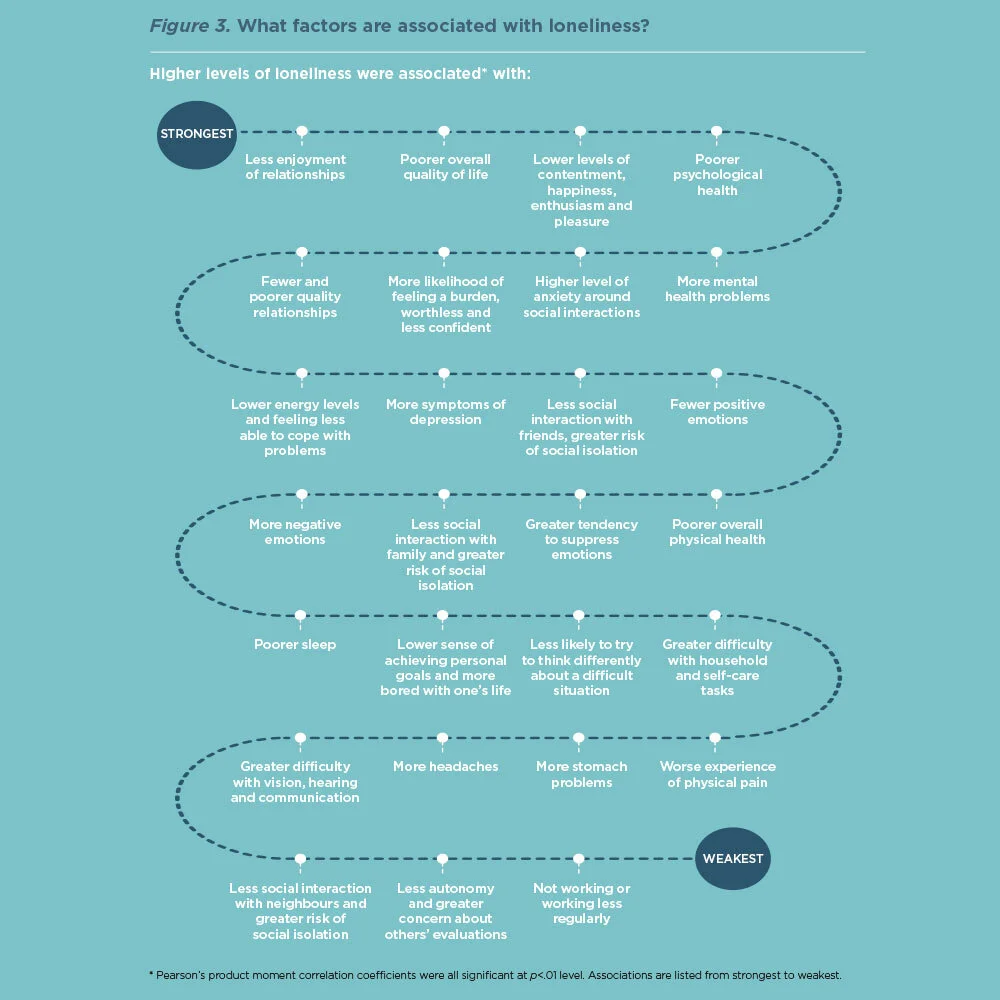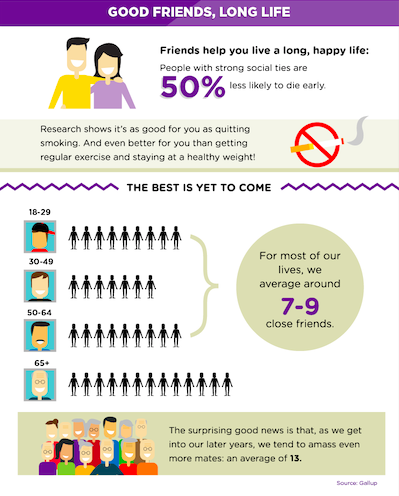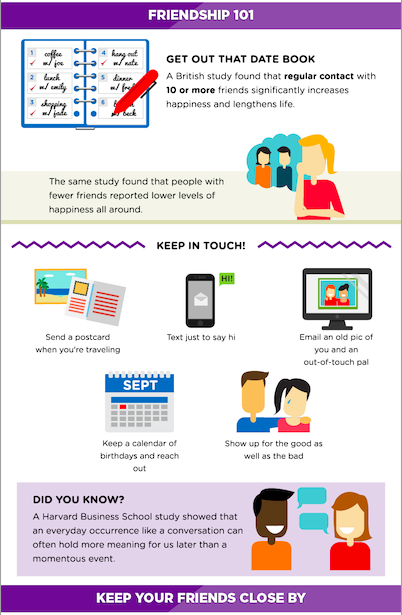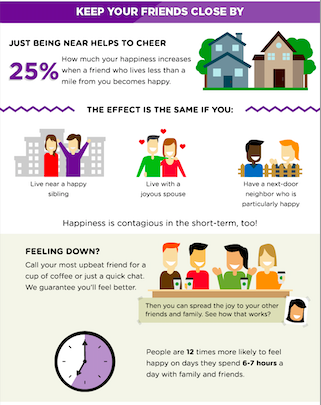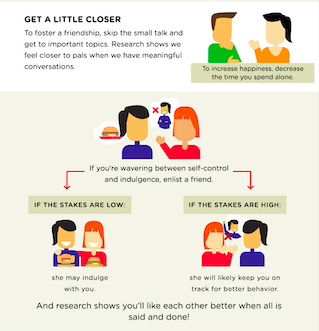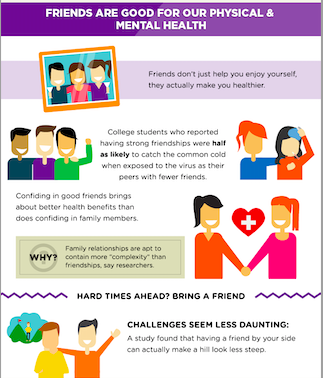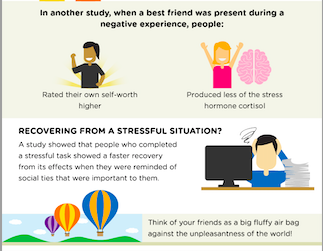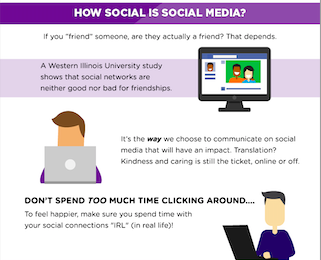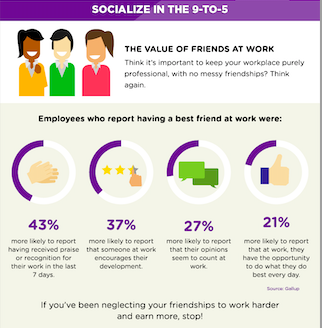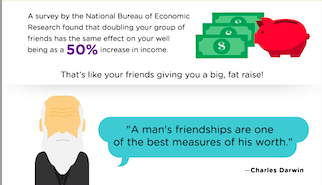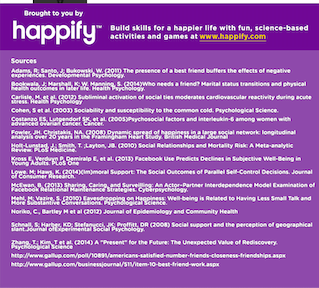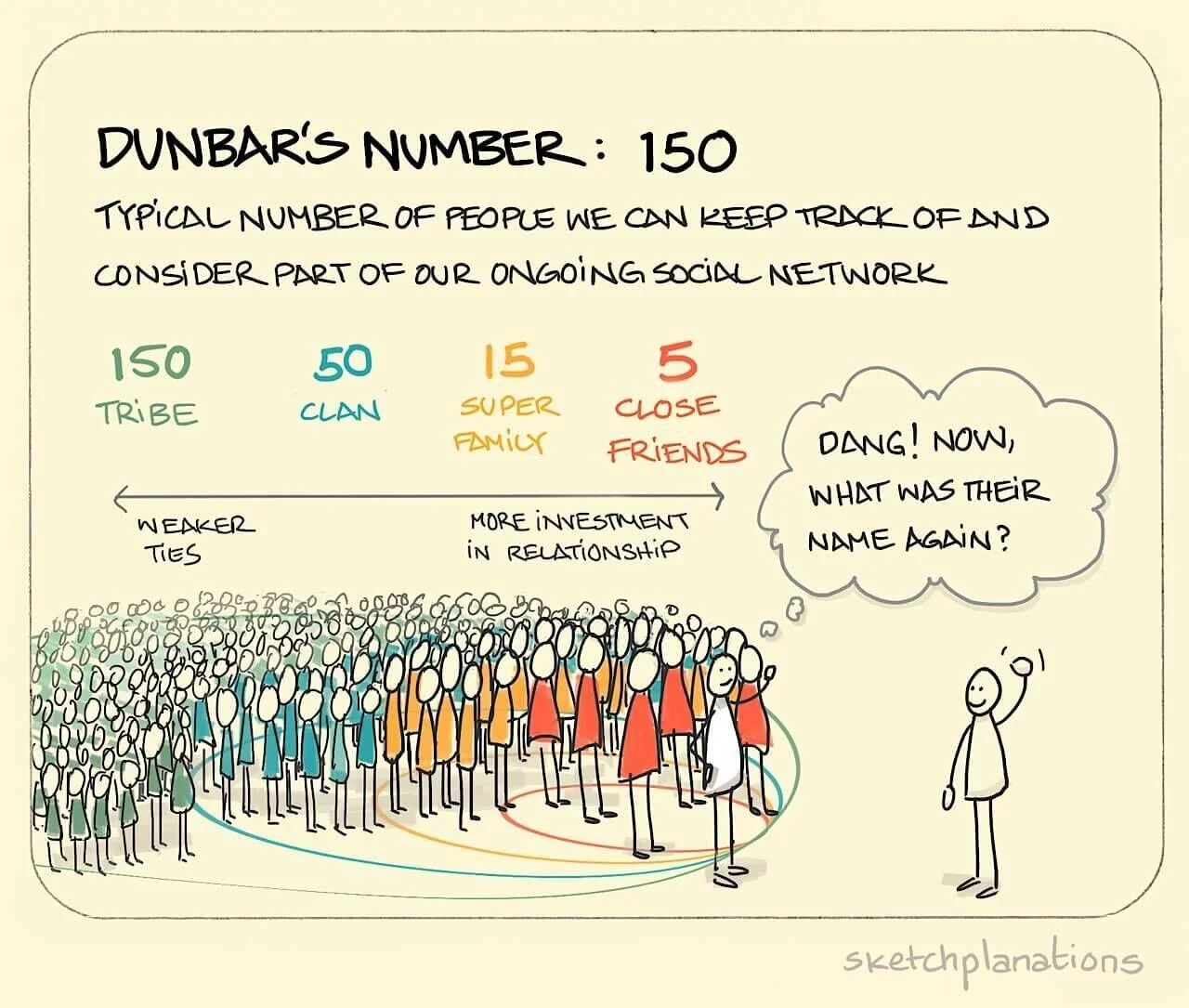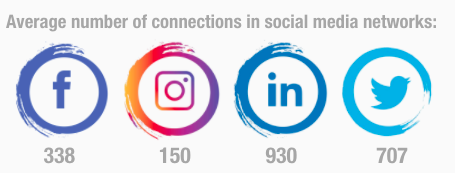Facetime just isn't the same as face time ( Raising The Bar 2021 - event talk)
On Wednesday April 28 2021 international idea sharing and thought provoking event Raising the Bar took over a bunch of Sydney’s inner city bars, all along the light rail track, to host a diverse series of free talks by some really interesting innovators, thinkers, leaders, creatives... and oh yeah... me
Fulfilling a dream of stepping on to the Belvoir St Theatre stage, I tackled the "not-as-simple-as-they-sound" questions at the intersection of technology, connection and humanity.
Thanks to technology and our devices we're more connected with each other and the world around us - and the wifi 5g's - than we've ever been.. this should be making us feel closer and more connected, but it's leaving more and more of us feeling more disconnected, lonely, and craving human connection, more than ever.…. so if Facetime isn't the same as face time... I have to ask....
"We may live by the wifi, but is it really our strongest connection?"
LISTEN TO THE RAISING THE BAR PODCAST OF MY TALK ON SOUNDCLOUD.. along with all talks from the night.
Around the globe more people own a mobile phone than a toothbrush, and Australian’s spend around 40% ( 6h 15m) of our day awake using them to take us online.
It’s likely that you will spend around 100 days online this year, mostly using your smartphone.
Online and on mobile has become how and where we connect, disconnect, talk to strangers, debate issues, dodge trolls, keep up with friends, scruff up some grind, join communities of shared interests, feed and find passions, find belonging, feel left out, work, learn, play, shop, search, game, laugh, cry, exercise, entertain, hide from loneliness, fall into loneliness, play out fantasies, seek motivation, feel inspiration, feed identity and even live stream sleeping.
Feeling connected to others and the world around us makes us feel like we belong; what and who we’re connected to both influences and shows our identity; and how we connect - or don’t - impacts everything from our relationships to our desires, satisfaction, curiousity, fulfilment, sense of belonging and sense of self– all the things at the heart of what gives us, and life, meaning.
The powerful impact of connection, whether it’s with the people around us, our broader community, our environment, the wifi, or even simply ourselves is underrated, and something most of us take for granted - and the destructive, damaging impacts of being disconnected are equally powerful .
>>> Check out my piece on The Underrated Power of Connection for Mr Gay Pride Australia <<<
This intersection of technology, connection and humanity - and the influence they have on us, our relationships and our lifestyle - is something I’ve been interested in and observing for a while now.
It serendipitously brings together my experiences of disconnection and loneliness in my childhood - and the damaging impact these have on us, and the work it takes to reconnect ( just one of many consequences of growing up with a drug dealing, heroin addicted, part time sex worker for a mother), a lifetime of experience living with my own depression and mental health - and a few too many attempts to “check out” of life early, my experience and work in social media and digital strategy - and what i’ve noticed about the influence ever evolving technology innovations have had on our behaviours and lifestyle , and my experience as an Ambassador with suicide prevention charity R U OK? Day - where encouraging the simple power of human connection is at the core of what we advocate.
I thought I had a solid understanding of the complex relationship that technology, connection and humanity have, and of the influence they have on us and our lives. Covid changed our lifestyle, creating an even greater consciousness about the space and distance between us and reliance on technology to keep us connected.
It’s also given us an unforgettable reminder of what we need, and the values, meaning, benefits and risks that our human and digital connections provide.
Like millions of others around the world, this covid apocalypse we’re stuck in tore my life pieces in ways that lit this intersection of technology, connection and humanity like a spotlight from day 1. I went in to the March 2020 lockdown already socially distanced (….isolated), with my mental health on the shady side, living life through my social media, and a little too heavy on risk …. so my year of covid was looking great from day 1.
I’d been working for myself for about 2 years, mostly from home, and didn’t notice the little bubble of isolation I was unintentionally building around me. I first felt that all too familiar void in Dec 2019, and immediately wanted to break it .Going in to 2020 my theme for the year was “Reconnection”. I had a plan and I was very ready to break the cycle I’d created, shake up all the habits that got me there and rejoin the world, not just tap into it through devices and social media.
About 2 weeks before we went into lockdown in March 2020 my housemate moved out – I didn’t find one before we locked down, but i’ve enjoyed living alone before, and didn’t think it would take long to find someone once lockdown ended…. It was 13 apocalypse months later that I finally found a housemate.
For me work is a mix of different things, but mostly I’m a freelance social media and content strategist, copywriter, speaker and model. As we went into lockdown, my client work shut down, taking my income with it.
I’ve never been forced into an abandoned burning house of horrors by a clown at gun point, but - rolling into the locked down and isolated covid world - with my head start of years, living by myself and paying double rent with little to no income, my goals and plans for the year to reconnect burnt, and my mental health fading to black.. - I can imagine it would feel similar to how I did at the time.
I have relatively strong isolation tendencies as it is, it’s one of the impacts of my childhood and depression that i’ve never been able to manage well, but..even for me, even for me….#covid2020 was a particularly disconnecting, isolating, lonely, mind fuck of an experience.
It was a covid apocalypse outside, and a crisis of existential dread inside….and mostly just my inner critic for company
With no-one around, no-one saw how badly it wore me down, but it broke me. I don’t remember the 3 months from June - August in 2020, if i’m honest I didn’t recognise myself for most of the year, because I fell into the biggest, longest, darkest, loneliest depression hole I’ve had in years ( taking down the little work, energy and life I had with it).
Just for the record - I don’t say any of this to try and paint my covid experience as being harder or more challenging than anyone else’s, for pity or sympathy..
As destructive and challenging as this all might sound (and it has been) what I’ve learned from the experience of it all - and from my childhood, managing my own mental health and from my social media and mental health advocacy work - and from other people through theirs, are the perspectives I see this intersection of technology, connection and humanity through.
These experiences are the foundation of this talk with Raising The Bar.
Is wifi really our strongest connection?
- the answers aren’t as simple as they sound.
The intersection of technology, connection and humanity is easy to miss, especially in our increasingly digital world where it’s easy to take them all for granted. However both independently and in how they intersect, they play influential roles in all aspects of our personal, social and professional lives - and our sense of belonging and self.
Innovations in new technology, our devices, the media and social media we use have been transforming the ways we live, communicate, interact and connect even before the internet went public in the 90’s, but it’s the last decade that most fundamental and rapid digital transformations have been happening.
They’ve disrupted and become deeply integrated into our lives, changing our behaviours, perceptions and habits with them. We use technology to maintain and improve our lifestyles, relationships, and even our sense of belonging and self worth, but we also use them in ways that can damage them. How much better and/or worse off are we for it all? That’s a complex, perpetual debate and I doubt we’ll ever truly have answers.
We wield a powerful double edged sword with all this new technology we use, and these new ways of living we’ve developed. They can, and have, empowered, enhanced and improved our lives in infinite - and at times unimaginable - ways; equally they can and have been a destructive, detrimental force, damaging and disempowering us.
All the technology, devices and social media we use are fairly new inventions though - the internet went public in 1991 ( 30 years ago ), Google is only 24 years old, YouTube 21, Facebook 17, the iPhone 14, WhatsApp 12, Instagram 11, Twitch 10, AltSpace 6, TikTok 4, Clubhouse 1. - and the pace of innovation is fast. it’s not surprising that we’re still understanding the impact of them and learning how to wield this sword of technology effectively, but we are learning and getting better at it… even if a little slowly.
Sometimes we just accept and adapt to new innovations and trends without really thinking about or noticing their impacts - positive and negative. Sometimes we just don’t understand the tools we use well enough to use them with the balance and care we should. With 90% of Australian’s now active online, and almost all of us using smartphones and social media, if nothing else, we need to become more informed and conscious of our behaviours.
It’s easy to say that human connection is always better, but the question of whether our many and varied new digital ways of connecting with each other and the world around us give us the same sense of connection, belonging, value and satisfaction that we get from face to face connection, might not be as simple as it sounds.
TECHNOLOGY:
SMARTPHONES, DEVICES AND THE FUTURE
We call the devices in our hand smart phones, but that actually diminishes their power, purpose and increasingly larger role in our lives.
They aren’t phones - they’re powerful little hand held computers, and they’re integrated into every aspect of our lives. Smartphones have fundamentally changed how we live, behave and interact and, like it or not, we would struggle to live without them. None of this is by accident. There’s a clue way back in 2007 that this lifestyle disruption and integration is very much by design.
Smartphones: the cultural, individual and technical processes that make them smart
Apple’s launch of the iPhone 1 was a transformative moment, not just for phones but for human behaviour and the world.
“Suddenly, I realized my Star Trek future had arrived, hundreds of years early. Forget communicators and phasers. I have something better and seemingly more advanced. I have an iPhone” - Michael deAgonia, Computerworld, 2007
The iPhone didn’t just change the phone game, it created a brand new league all of its own - and everyone else had to follow. Among its many groundbreaking innovations is one that tells an important story. Before the iPhone, phone memory was measured in megabytes (MB), not the gigabytes (GB) we have now. The newest, most advanced phones at the time from Blackberry (8800) had a 64MB RAM, Motorola’s Razr 50MB, Samsung’s top shelf BlackJack had 128MB and my Nokia 6263 flip phone had 40MB.
The iPhone 1 offered RAM memory capacities between 4GB and 16GB – The smallest 4GB memory was 62x larger than Blackberry 8800 and 80x the Motorola Razr… and my little Nokia had a mere 1% of its capacity.
One of the most incredible technological achievements the world has experienced is still the Apollo 11 Moon landing,. Like the moon landing the iPhone was a giant leap for mankind, powered by the most advanced technology of its time…. but the iPhone put more power in our hands than you may realise.
The memory capacity of the 4GB iPhone 1 was 1 Million x larger than Apollo 11’s onboard computer - that flew them to the moon and back.
The processing power of that iPhone 1 was also 100 000 x that of Apollo 11’s computer.
Our smartphones, tablets, laptops and desktops are loaded with apps that allow us to do almost everything we didn’t even know we need. Our devices, and the technologies that enable them, connect us to ourselves and every aspect of our lives.
They also connect us with our friends, family, colleagues and the world – we can talk; send messages made of text, emojis, GIFs, and avatars; send email; take, store, send and cloud share images and video; and live stream video chat to and from almost anywhere in the world.
How much we use and depend on them feels evident in how their memory capacity has grown over time. The current iPhone 12 has a memory capacity up to 256GB. The iPhone 13, dropping later in 2021, is rumoured to have a capacity of up to 1TB.
Smartphones were designed to streamline and simplify our lives, to give us more time, space, flexibility, opportunity and freedom to have more life in our life. We would be lost without them - just try to remember how you felt the last time your battery ran out with no charger in sight. Maybe we haven’t used the space, time and convenience our devices were designed to create for us as wisely as we could though, because they’re distracting us and getting in our way…. texts, chats, calls, typing, videos, screens, pods, games, apps, updates, swipes, passcodes, editing, scrolling, searching…. these all take time, attention and a lot of cognitive thought and energy.
We’ve filled the space that was meant to give us more life with buzzwords like stackable behaviours and snackable ideas, and at least some of the time with Candy Crush, Among Us, meaningless distraction and the concept of “busy” - but distraction is always good and busy isn’t always productive.
Every other week there seems to be a new report about what our devices and increasing screen time are doing - or not doing - to our brain. As we debate new challenges of Smartphone Addiction, and a Reliance on smartphones being linked to lazy thinking we’re also saying that No, you’re probably not ‘addicted’ to your smartphone – but you might use it too much. Neuroscientists are also claiming they Know Exactly What Causes Phone Addiction. - and it’s not the often blamed iPhone.
If the truth of whether our screens and tech are influencing us for better or worse feels hard to find, that’s because it ii is - and because they’re doing both. For every 9 ways smartphones are making our lives better and 20 Advantages of Mobile Phones there are 11 Reasons to Stop Looking at Your Smartphone and 7 smartphone trends that really should stop in 2021.
In many ways we’ve filled the space technology gave us with things that make life more complex, pressured, overwhelming, distracted and busier, not simpler, streamlined, flexible and more free as intended. It’s not surprising that we spend so much time in our screens, or that we’re developing new and better technology to replace them.
This does raise questions about how well we as users really understand the devices we’re using, or why we’re using them the way we do…
The Future of SmartPhones
Future predictions for smartphones talk of a more integrated, hands free, voice activated future made of AI, wearables, interactive displays and interfaces, and buttonless, portless devices and screens. A complete transformation into AR led innovation is also in development, with a face-worn computer or glasses that project interactive computer-generated displays, replacing devices as we know them altogether. The future of smartphones is smarter, faster, lighter, more personal, more connected, more about voice and display, less about screens, and even more deeply integrated.
The intention of all these innovations is to streamline and simplify the devices we use and how we use them, to reduce the cognitive load they now take, reduce stress and screen time, and give us more time, flexibility and opportunity - sound familiar?
The ultimate in technology integration, using our own DNA for digital data storage , is closer than you think. Researchers in transhumanist technology have already successfully stored and retrieved copies of The Wizard of OZ, War and Peace, Deep Purple’s “Smoke on the Water”, GIF’s and much more in human DNA
Science has reliably proven that we can be used as a multimedia storage "device" enough times to make it credible.
- 1 gram of human DNA can store 215 Million GB of data...
- We have the capacity to be our own data server, and the amount of data we can store is almost inconceivable.
- DNA sequencing of data is extremely expensive though - DNA sequencing 1 min of high quality stereo sound costs around USD$100K.
- This high cost is the only thing holding further development on making DNA sequencing data more accessible back right now. …..but for how long?
All of these innovations are designed to lighten the load our devices have created - both figuratively and literally. The future is more human centric design, and they of course have benefits, risks and impacts that, like the iPhone in 2007, we can’t fully understand right now.
To ensure our coming technology , devices and innovations benefit us more than harm us we need to understand them better, be more conscious of how we use them and adapt to using them more effectively - and we need to do it much faster and with greater awareness than we have been.
CONNECTION:
SOCIAL MEDIA AND DIGITAL COMMS
Helping us connect even deeper with friends, family, work, the world and even ourselves are the social media and digital platforms that we use.
Because of my Ambassador work with R U OK? and talking openly about my own experience with mental health, it’s not unusual to get DM’s asking for advice - anything from about services to help with an issue to wanting to talk.
Talking with someone at a party recently they stopped, realising we’d spoken before. Years earlier they had sent me a Facebook DM, wanting someone to talk to in a very vulnerable moment one night.
“Thank you for taking the time to talk with me that night, I felt stupid messaging you as we’d never met, but I didn’t have anyone to talk to about how i was feeling and didn’t know what to do. I didn’t want to live any more, and you took time to talk to me even though you didn’t have to. I will always be thankful for you, because I wouldn’t be standing here and be able to say thanks if it wasn’t for the time and understanding you gave talking to me that night”
I don’t know how many DM chat’s like this one I’ve had, but without social media I know none of them would have happened.. and these people I’ve chatted with may not have found the help they needed in their most vulnerable moments.
Social media has its faults but isn’t all bad, so does it really deserve all of the criticisms, negative perceptions and harmful reputation directed at it?
We use social media to stay in touch with friends and family anywhere in the world, share experiences, stories and interests, seek help and information, find and be part of communities, discover new experiences, shop brands and products, entertainment, of course live that oddly controversial #selfie life and so much more.
But, as anyone who has been bullied, harassed, stalked or received threats of death and violence through social media knows , there are also people who intentionally use it to maliciously inflict harm and disruption on specific individuals. Australian journalist Ginger Gorman published the insightful exploration of troll culture, Troll Hunting: Inside the World of Online Hate and its Human Fallout that was also a call for much needed change and protection from the impacts of online abuse. It’s so easy to communicate on social media that this harassment can feel ( and be) close, personal and relentless, and genuinely harmful and destructive for the people they target.
We know that social media platforms, the digital environment, we as users and the laws intended to provide some governance and protection ( that are still well behind the capability of technology ) are imperfect, and it has risks we need to be conscious of and manage. But if we listened blindly to the bias and scaremongering of programs like The Social Dilemma you might believe social media is some kind of unregulated, invasive, high risk, mind controlling, digital Dr Evil, stripping us of independent thought, offering nothing positive or beneficial - and that’s just not the case.
Is The Social Dilemma really telling us the whole story? <<< check out why I think the story was biased and misleading.
Social media receives a lot of negativity, criticism and responsibility for “ruining us and the world” - and It has faults, issues, risks and imperfections that need to be more effectively addressed - just like any other industry.
However it also enables wonderful, empowering, connections and experiences that create value both for us as individuals and society as a whole.
Social media can and has been used for good more often and in ways that we perhaps aren’t aware of or don’t like to recognise, and they aren’t often talked about..
It isn’t all bad, and some of the criticisms and expectations placed on it can be unbalanced, misdirected and at times unreasonable.
SOCIAL MEDIA FOR SOCIAL GOOD
One of the most recent examples of the power of social media to create positive connections for good is in the global reaction to The 2020 Australian bushfires .
The entire world was engaged in real time horror as the bushfires raged. Hundreds if not thousands of images, livestreams, stories, videos and simple status updates shared personal stories, real time updates, public sentiment and more across multiple social media platforms every day. Social media connected not just the country but the world to the raw human experiences and emotion in the devastation. These stories made the fires, fear and environmental catastrophe feel real, tangible and personal, making them more affective than any news bite or headline can ever achieve.
It can be hard to measure or understand what this realistically means, but one example of the power this can have is in the donations and fundraising efforts:
More than 19,000 Facebook fundraisers were created by individual Facebook users to raise bushfire recovery funds.
Over $73M was raised by Facebook fundraisers - 13% of the total $535M raised.
Australian comedian Celeste Barber raised $51M in donations alone through her Facebook Fundraiser - and we learned from an important lesson from the controversial political complexity that this lead to.
Donations were made by people from 75 countries – showing how affected the world was by the experiences of bushfires and world away, and how eager it was to participate in a meaningful way.
More than 250 non-profit organisations directly benefitted from Facebook fundraisers - nominated as the recipient by the fundraiser. Facebook facilitates all payments, simplifying the process by eliminating all admin, risk and financial responsibilities for the fundraiser that traditional efforts can create.
For my full story of The Powerful Roles of Social Media in The Australian Bushfire Crisis >>> Listen at The Good Social Media Podcast or Read at Paper and Spark
Crisis Support Services like Lifeline , 1800 Respect, The Suicide Callback Service and more offer Text, Social Media DM and Website Live Chat contact options- not just for flexibility, but because sometimes it’s easier - and safer - to talk if you don’t have to say anything. These alternative options to digitally connect with organisations in different ways make help more accessible for everyone who needs it.
Netflix Party and YouTube Party create shared group experiences of watching tv and movies with friends, just online instead of face to face. Zoom leveraged this and, feeling like it appeared from nowhere, became an unexpected winner from this covid pandemic.
Live streaming and video chat platforms including Facebook Live, Zoom, Microsoft Teams, the independently hosted and more, have also been used to create connections from home in the workplace for conference calls, planning, teaching, and maintaining team relationships; socially to host everything from virtual Cocktail Parties, Bookclub meets, to online dating and casual catch ups; and broadcasting all types of events, including TedxSydney in 2020 and 2021, performances like world first’s from The Bolshoi Ballet, and Kylie Minogue’s “Disco” one off performance - broadcasting paid, ticketed, live experiences that would normally be held in front audiences in venues of all sizes. ( in many cases expanding audiences and opportunities like never before
https://electronicmusiccollective.com/2020s-best-live-streaming-events/
Facebook and LinkedIn Groups bring people together over shared interests and needs. Groups allow people to easily connect with others around the world over shared interests - from Lego to travel, local bush and scenic hiking, local events, parenting, career networks, health conditions, RuPaul’s Drag Race and almost anything else you can imagine - creating community, belonging and excitement with like-minded people. During the bushfires Facebook groups were used by local communities and families to communicate quickly and easily with entire towns and families - sharing updates on everything from fire movements and damage, to the location, condition and safety of each other and properties.
TikTok is built on a foundation of connection for fun - bringing people together to participate in, and add their own voice and style to a whole world of challenges, duets, reacts and other content just for the fun and laughter.
Online Gaming creates a stronger social lifeline for gamers than you may imagine. Gamers have been building valuable relationships, communities and meaningful connections since gaming started in the 70’s.
Clubhouse is the first audio social media platform, and with the rise and future of voice activation, it continues to grow - bringing people together over ideas and innovation, career and business growth, interests and passions, social and political issues and even live broadway performances.
Launched in March 2020, it’s already hosted many unique and never before accessible opportunities, events and discussions - and a future looking hands free connection to them.
Adapting to the Covid lifestyle has also bought technology and social media into places, and had us using them in ways, that we’d never imagined. Live streaming hasn’t just been for work and play, it has also been valuable and popular tool in more personal moments. Live streaming funerals, weddings, birthdays and other important events, whether by Zoom, Facetime or Facebook Live has allowed family and friends from around the corner or the world to still come together and participate in these highly impactful moments of life that no-one wants to miss.
A Holographic Future isn’t far away.
And we’re not that far away from stepping into a future that was unimaginable sci-fi only a few years ago. In April 2021, in a locked down UK Virgin Media used the latest innovations in holographic technology to bring friends and family together over the same table to share pizza and conversation, closing the almost 700km distance between London and Edinborough separating them.
Two real pizzas, two real people, two distant locations, two holographic broadcasts into each location, sitting these far away friends and family at the same table at the same time to catch up face to face in life size, 3d, 4k, virtual realness. This wasn’t your usual video call.
How long will it be before we don’t even need to be in the country, to be in the room?
The positive influence, benefits and power that social media can have comes from the connections we make, stories we share, what we learn, and how we choose to use our own technology and social media. The positive aspects of social media are often underestimated, undervalued and not often talked about.. but they should be, even just to bring a more holistic balance and understanding to the conversation.
Social media has the power to not just connect us, it can help us discover and create experiences and interests, and even grow. It encourages us to feel the moment, be part of something, and actively participate, even when we’re a world away.
HUMANITY:
RELATIONSHIPS, BELONGING, SELF IMAGE
Ironically, having the world literally in our hands, with all of our digital technologies creating greater ability to connect.. anywhere, anytime, with anyone.. is having an opposite effect to what it should be. It’s leaving more and more of us feeling more disconnected, lonely, distanced, even excluded at times – however unintentionally - and more craving of face 2 face, human connection and touch – not relationships through a touch screen - than ever before.
I recently started working in a bar a couple of nights a week. I’m lucky, it’s a bar where a lot of people I know, or who know me, go. I’ve had a lifetime of being the drag queen, the go go dancer, the host, the barman at various times in bars and clubs - so bouncing around the bar being all chatty and flirty feels a bit like being paid to be out having fun as it does work.
On one of my first shifts I was caught off guard by a thought – looking at myself and how I was feeling and interacting with people, and comparing that to only a few weeks before – stuck like lead to the lounge with nothing buy my own stress and inner critics fuelling how I felt.
I realised I was starting to feel a little more like me again.. interacting other people, laughing, having conversations and connecting in ways, and with more people, than I had in years.. I still have the same stresses, issues and all the dust and darkness of the depression I’ve been trapped in to manage and resolve, only they don’t feel as heavy, overwhelming, never-ending and helpless as often,, and neither do I.
The only thing that had changed to help create this change was that I wasn’t hiding / stuck at home alone, peering into the world through online windows and screens. I was starting to connect with the world, other people and myself again, .. and this step has been helpful, beneficial and healing.
It’s naive and misguided to say that being surrounded by others, even just one other person, online or face to face, cures or solves personal and social issues like loneliness, depression and mental health conditions. I also know the feeling of being completely alone - in the world, in the darkness and in a crowded room - intimately. They are difficult feelings to counter, battle and navigate through, but not impossible.
Being aware of the harmful habits, behaviours and beliefs we can form that place, and keep, ourselves and others at risk, intentionally or not, and taking the time to understand them is an important start to loosening the grip of loneliness. Following awareness with action, consciously taking steps to break existing cycles, create new habits, and improve our connections and relationships, helps us to minimise the harms that feelings of isolation and loneliness have on us and those around us.
The 2018 Loneliness Report from the Australian Psychological Society highlighted that:
25% of Australian adults felt lonely, and
50% of us felt loneliness for at least one day a week.
The impact of this really starts to be felt when
nearly 30% of Australians say they rarely or never feel part of a friend group, and
around 20% of us say they rarely or never feel close to people, or that they have no-one to talk to, or turn to to feel supported in times of need.
It’s fair to say a worryingly large number of us were feeling isolated, distanced and disconnected from those around us - and feeling in need of greater connection with friends and family- long before the covid apocalypse rolled into 2020 and tried and make it trend.
Research findings suggest that prolonged feelings of loneliness and isolation are detrimental to physical and psychological health. Feeling lonely and socially isolated can contribute to
unhealthy behaviors such as getting too little exercise, excessive drug and alcohol use, poor sleep habits and poor diet.
declines in mental health - depression, self image, self worth, anxiety, social anxiety, heightened physical and psychological stress responses etc
elevated risk for heart disease and stroke.
It’s believed that loneliness can contribute to cognitive decline ( slower thinking ability and information processing) through multiple pathways, including physical inactivity, symptoms of depression, poor sleep and increased blood pressure and inflammation.
increased risk for premature death, similar to the heightened risks of smoking, excessive drug and alcohol use and obesity.
Psychology.org.au - The Impact of loneliness on health and wellbeing
American psychologist Prof Jean Twenge was able to pinpoint exactly how long these feelings of disconnection have been growing, publishing findings from a long term study on US teen behaviour from 1976 – 2016 in“ iGen: Why Today's Super-Connected Kids Are Growing Up Less Rebellious, More Tolerant, Less Happy--and Completely Unprepared for Adulthood--and What That Means for the Rest of Us” . The study revealed 4 correlating milestones that mark the significance of July 2011:
iPhone ownership and adoption in the US tipped over 50%, only 3 years after its 2007 launch. This set a steep trajectory to 80% adoption by 2018
Internet usage in teens followed this sharp, upward trajectory almost identically.
General measures of happiness and satisfaction in teens (sleep, happiness, social interaction, sex, work, exercise etc) all rapidly declined on an almost exact opposite trajectory,
General measures of unhappiness and dissatisfaction ( loneliness, isolation, low self image, tiredness etc) in teens all followed the rapid upward trajectory of the iPhone and usage.
It’s impossible to attribute the steep declines in satisfaction and connection, and the inclines of unhappiness and isolation solely to smart phone adoption, usage and changing behaviours, but these correlations in the data, trends and timeline show they have had some influence.
What causes feelings of loneliness, social isolation and disconnection from friends, family, colleagues, the world around us and even ourselves might not have straight forward, easy answers with single points of risk and failure, but what we need - and the physical, social and psychological harms when we don’t get them - does.
Loneliness is often described as the feeling we get when the quality of our social contacts and relationships is not meeting our needs. - R U OK? , Let's end loneliness together
Understanding why human connection is so important to us - and why it’s more valuable than any of our digital connections - starts with answering why we create relationships, how we develop bonds, and what impact feeling closely connected to others has on our overall physical and psychological health - both when we feel it and when we don’t.
>>> Happify Benefits of Friendship Infographic/
How do we create connection and relationships?
The science in the art of friendship and connection. ( effort + proximity + capacity)
EFFORT
We know that developing friendships and relationships takes time and effort, and a 2018 study on friendship from the University of Kansas explored exactly what it takes to make a friend. The study revealed that:
The average adult needs to spend 50 hours of time with a person to consider them a casual friend.
It takes approximately 200 hours of shared time and experiences to think of a person as a close friend.
Time, experience and conversation alone do not create strong, meaningful connection – if developing friendship was just about the people we spend a lot of time with, many of our co-workers would feel like family.
Accessibility, opportunity and effort to spend time physically together in different environments and situations, are essential to developing friendships - consciously and deliberately making effort and time is essential.
Shared experiences and activities, particularly leisure and fun, and engaging in meaningful, deeper personal conversation are the strongest indicators of the quality time needed to develop the connection, understanding, comfort, trust and other characteristics at the foundation of friendships.
As more time is spent engaged in these types of activities with others , friendship, familiarity and closeness are more likely to increase.
Friendships develop quickly after meeting, usually within 3-9 weeks. The more time it takes to form bonds - or start to- the less likelihood of strong, lasting connections being made- or the longer it will take to make them.
PROXIMITY
A 1950’s study on human connection established what's now known as the Proximity Effect – the impact that physical closeness has on how we form opinions of, and relationships with, others and how quickly we form them. The study revealed that being in close proximity to others allows us form stronger relationships, opinions and bonds with them, and we do it faster than when apart.
When close together we’re much more able to engage in important aspects of non verbal communication that allow us to communicate, engage, feel and assess each other in ways we simply can’t, or can’t do as effectively, by distance or through a screen.
Eye Contact - We can make direct eye contact, not indirect through a screen, allowing us to recognise, communicate and share emotion and meaning - humour, that sarcastic side eye, avoidance, deep sincerity – virtually simultaneously : with no issues like lag, drop outs, lighting, camera quality, feeling comfortable looking into the camera, uncomfortable seeing ourselves staring back from the screen, filters or other distractions disrupting the moments.
Touch - We can touch each other. Touch is crucial to our emotional development, interpersonal communication and social bonding – it helps us affirm our relationships, communicate how we feel about that personal, show emotion - empathy, care, anger, joy - and even our show our sense of self and what we need in the moment.
Shared Environment and Experience - When physically present and sharing a space with others we are able to observe in a shared environment and moment - the whole person and all their reactions, making it easier to recognise and interpret body language and non verbal cues more easily, and respond more quickly.
Authenticity- We can be completely attentive, authentic, real, present and in the moment. In video, text, talk, image etc, we can edit, hide, show and be what we like - creating an image that we want to communicate, and not necessarily be or show the real truth ... It’s virtually impossible to edit ourselves in the same way with a person sitting opposite us.
Positive Physiology Effect - eye contact, touch, voice and physical presence don’t just help us communicate, they trigger physiological hormone responses in the body that effect how we react and feel about a person or situation. Social interactions that specifically involve touch and eye contact release the hormone Oxytocin. Nicknamed the ‘cuddle hormone’, oxytocin is essential for building relationships and bonding due to its anti-anxiety effect which helps to increase attachment and empathy. The release of oxytocin also improves wellbeing and reduces stress, over time, contributing to improved health and longevity.
Being in close proximity simply makes it easier to be ourselves, use our intuition and judgement, and be focussed and present in the moment - and harder to hide what we don’t want others to see or know. This makes it easier to more fully trust the moment, and the person we’re with - whatever their verbal and non verbal cues are telling us about them.
CAPACITY
We all have different types of relationships with different people, from the close bonds we have with our closest friends to the social relationships we have with casual acquaintances, and we value each of them differently. Most of us would rarely do the things we do for our best friends and family for casual friends, we just don’t have the capacity to dedicate the same time and energy to everyone we know.
In a 1993 study Anthropologist Robin Dunbar founded that human brains have a limit on the number of meaningful relationships they can manage. He quantified his findings with The Dunbar Number, stating the average person has the capacity for:
5 intimate bonds: spouses, best friends, and so on
15 close friends: people you trust and spend time with regularly
50 friends: people you would invite to a personal event like a wedding or dinner
150 casual friends: people you would invite to a big party
>>>> Friends: Understanding the Power of our Most Important Relationships (Robin Dunbar, March, 2020)
Dunbar’s theory compared to the average size of social media networks.
It’s proven that having friends and relationships with others who we feel close to and have regular physical time with are important predictors of physical, psychological and social health, and overall feelings of satisfaction, belonging and happiness.
The science in the art of friendship tells us that the average person has the psychological capacity for 20 close and intimate relationships; that we form faster, more accurate opinions and connections, and stronger relationships, with others when we’re physically close and relatively easily accessible; and that it takes between 50 - 200 hours of consciously made time and effort with someone, in different environments, sharing different experiences to form stronger, more lasting friendships and relationships.
It’s no wonder then that, for the average person, we value, give more, feel more and get more from our time spent face to face with others than we do spending time with even our best friends - and closest online connections - through a screen. That doesn’t mean we should walk away from using our devices and technology to connect with ourselves, each other or the world though - we just need to understand them, their influence on our behaviours - and understand ourselves and what we need - better, and use them more consciously .
Using technology to connect with others, no matter who they are - your best friend.. or just a friend; your grandmother; your partner travelling away from home; that online friend who loves 80’s space lego in the same way you do; that Facey friend you can talk to to get help when you need it, but don’t know what that means or how to find it- absolutely gives us value, helps us and enriches our lives.
A Facebook comment, Like on Insta, DM, Group Chat Message, Event Invite, Text Message, Phone Call or Video Chat are all valuable, simple ways to connect with others, keep our connections and friendships alive, show we’re present, we care and that we’re around…. and they do make us feel seen, heard and cared for by others. These digital and social media connections are like snacks though, and they’ll never replace or have the same value and power as the human connection of time spent together. and no-one can live on snacks alone.
Technology and our devices may be a lifeline for those who live in remote areas, but for the rest of us they’re a supplement to human connection- not a substitute for it.
THE FUTURE:
WHAT CAN WE DO TO MAKE IT BETTER?
We’ve been talking about this intersection of technology, connection and humanity for longer than we realise.
New technology has been disrupting society, creating new potential, and new behaviours, fears and questions for centuries. In 1877 the New York Times declared that the telephone was the end of privacy, and that it would make people lazy and anti-social…hmm… ok maybe they were on to something there. Inventor of the radio Guglielmo Marconi often wondered if he had “done the world good” or just “added a menace?” as he saw the use and adoption of radio expand far beyond his intentions for it. Some believed the introduction of images into newspapers in 1893 signalled the infantilisation of information and a dumbing down of knowledge that would trigger a decline of intellect and interest in intelligence… and who can forget the sound of 1980 echoing how video killed the radio star around the world.
The potential good and potential risks at the intersection of technology, connection and humanity are filled with decades of predictions, warnings and calls to action to be more informed and conscious of the influence our devices, technology and social media have on us and our lives.
Interestingly the TED Talk by Psychologist Sherry Turkle “Connected, but Alone” may have be given in 2012, but the exact same talk could be given today, and be just as, if not even more relevant and resonating. Observing the emergence of these new technologies, devices and social media, and the influences and impacts they were having on our behaviours, habits and lives - some subtle, some obvious - Turkle found a simple, powerful insight at the heart of the problem in all the complexity ].
“We expect more from technology than we do from ourselves and each other”
We seem to blame devices, technology and social media for being the cause of almost every issue we’re facing today, but we don’t often see ourselves - individually or collectively - as being accountable for them. As we focus on the tools we use as the causes and problems, we overlook our role as the user in them - to our detriment. The tools aren’t the only problem, we are part of it - we are responsible for how we use the technology, devices and social media we have - and for not fully understanding and/or misusing them at times; we are accountable for our own behaviours, habits and choices - and for the positive and negative impacts they have on ourselves and others; we do have a duty of care to look after ourselves, and look out for our family, friends, colleagues and community.
We also have more capacity for control, awareness and self awareness in all these areas - in our lives - than we often like to believe ( or like to forget..), and we disempower ourselves and our ability to create and influence change when we overlook, are oblivious to or deny our role in creating and maintaining the issues that concern us. If we can accept and admit that we are part of the problem - not just innocent bystanders mindlessly being led by into chaos and disconnection by the technology we use - we also take back our power to address, influence and change them, and change our own behaviours to be part of the solution.
SO WHAT CAN WE DO?
One of the many life lessons we’ve learned from the impact of covid is that connection, both digital and human, plays an important role in our health, wellbeing, self image, relationships and overall satisfaction.
The science in the art of friendship is simple, and what it really tells us is that technology is a valuable and important tool for keeping us connected when we’re apart, but it’s no substitute for human connection.
Facetime is beneficial for us, but it just isn’t same as face time.
